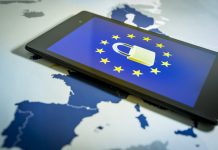Eva Kaili, MEP, Rapporteur of the European Parliament of the Blockchain Resolution, explains her thoughts on blockchain technology in the European Union today
On the 16th of May 2018, the Committee of Industry, Technology, Research and Energy of the European Parliament, voted with the complete support of the all the parties, with the impressive majority 56 in favour and one against, the Resolution on DLTs and Blockchain, that I introduced as rapporteur.
It was not only one of the very few times that all the political parties unanimously supported a text, it is also a strong message that the European Parliament sent by defining the optimal way of how to approach blockchain technology, how to allow it to scale-up and how to enable it to give practical solutions to the everyday lives of the consumers and citizens.
It is true, that it is difficult to identify the best way to approach a technology which is still evolving and has an uncertain impact.
It is, therefore, necessary, to identify regulatory principles. I suggested that it is of main importance, not to violate or delay with a defensive approach, the innovative and disruptive character of the technology. For this reason, I believe that the two instrumental principles we should use are the technology and business model neutrality principle.
Technology neutrality principle means that we should not regulate the technology per se, but its uses and those who use it. In this way, we provide the emerging blockchain and distributed ledger applications with legal certainty and a strong layer of consumer protection. On the other hand, the business model neutrality principle has a market structure dimension. The regulator makes sure that it will not intervene in favour of any business model, legacy or emerging and will allow the market to decide freely. Practically, this means that if blockchain can positively disrupt existing value chains and distort legacy business models and actors, then let it do so.
In my view, it is important for both citizens and policymakers to see the potential of blockchain beyond cryptocurrencies. The resolution of the European Parliament was a tool to raise awareness between the policymakers and citizens, in that blockchain is not just Bitcoin. Bitcoin is a great example of decentralisation and an even more revolutionary peer to peer exchange of value than the peer to peer exchange of files and information, like BitTorrent does.
In the first part of the text we describe the different “families” of DLTs, permissioned and permissionless and we provide indicative examples of sectors that could be affected, including energy, supply chains, the financial sector, healthcare, education, the creative industries, transportation and even the public sector with ID blockchain solutions, for example. In our approach, blockchain is not just a technology. It is an infrastructure that can allow us to build upon innovative solutions, like the Internet of Things (IoT), AI and more emerging technologies.
Blockchain is also an enabling technology. To boost its potential, we must make sure that there is open fertile ground around it. One of the major priorities of this resolution is to define the requirements of a vibrant ecosystem. Building a competitive blockchain ecosystem also requires addressing some major challenges. In our resolution, we touch fundamental issues like the interoperability, scalability, standardisation, cybersecurity, and data privacy that solutions need to be further explored.
Smart contracts are also welcome in this context and we underline the need for legal certainty as soon as possible, while the European Blockchain Observatory will map not just blockchain applications, but also the best practices to provide guidelines for a harmonised regulatory environment and as several Ethereum applications could achieve.
Of course, a very important part of this resolution underscores the potential for innovative start-ups and the Small and Medium Enterprises (SMEs). Blockchain has a strong market structure impact that reduces the entry costs of SMEs and start-ups in markets, augments competitiveness and boosts the redistributive forces of the market.
SMEs and start-ups also are benefited by the tokenized crowdfunding that ICOs can provide. Our report stresses the potential of ICOs in accelerating technology transfer by improving the allocation of capital to unbankable projects and to some extent, correcting the poor performance of the VC markets. It is of high concern, though, the potential of fraud and the lack of legal certainty around ICOs.
Different jurisdictions adopted different regulatory approaches. For example, the US put ICOs under the umbrella of securities, whereas Korea banned them altogether. What we propose in our resolution, is to consider the options beyond the apparent regulatory solutions. It is not necessarily new financial instruments to fit in old boxes. ICOs might be a distinct brand new asset class. One of the proposals of our resolution is for the EU to establish an ICOs and Tokens Observatory to explore legal needs, best practices and bad practices as well.
Finally, in the area of cryptocurrencies, it is of paramount importance to open our mind beyond the considerations of the traditional monetary theory. We need new monetary policy models to stay relevant. In our resolution, we stress the need the European Central Bank (ECB) to abandon its defensive position and explore tools that reduce the volatility of cryptocurrencies. We understand, of course, that given the current volatility, cryptocurrencies cannot function as “store of value”. But they probably are not commodities as well.
A few months ago, the European Parliament stressed in the Anti Money Laundering Directive that cryptocurrencies are not just means of exchange but means of payment. This has significant tax and payment tracking implications. At the same time, cryptocurrencies should be adopted in the Euro-area payment system because, contrary to a simple digital-currency, a cryptocurrency can be programmed with smart contracts and unleash a wide range of economic opportunities. I see very positively the case to explore a Euro-cryptocoin, an open decentralised Euro Exchange and more tools to make the most out of this technology.
I believe that with this approach, the message that the European Parliament sent was very productive, unbiased and promising. My view, and most importantly the European Parliament’s view, is that Europe can be the leader of the Second Machine Age and lead in the era of blockchain and artificial intelligence (AI), just like the US was the global leader in the era of the internet. More exciting blockchains are on the way, while more legislation is also on the way and it is Europe that could be innovation-friendly and give trust and control of their data, back to the citizens. In the meantime, we already work for open data for the public good, since this would be the fuel of the future and science. Blockchain could play an important role to give transparency in the use of our data for science, to know who when where and why is using it. GDPR was just an example of what we can achieve to protect privacy and lead globally.
We continue our systematic, open-minded and careful work and we hope soon to see the first results of our policy in the quality of services that Europeans receive both as consumers and as citizens.
Eva Kaili, MEP (S&D, Greece)
Rapporteur of the European Parliament of the Blockchain Resolution
Tel: +32 (0)2 28 45613











